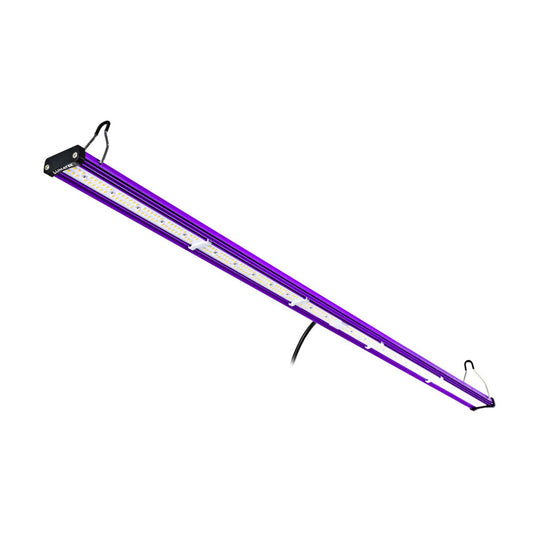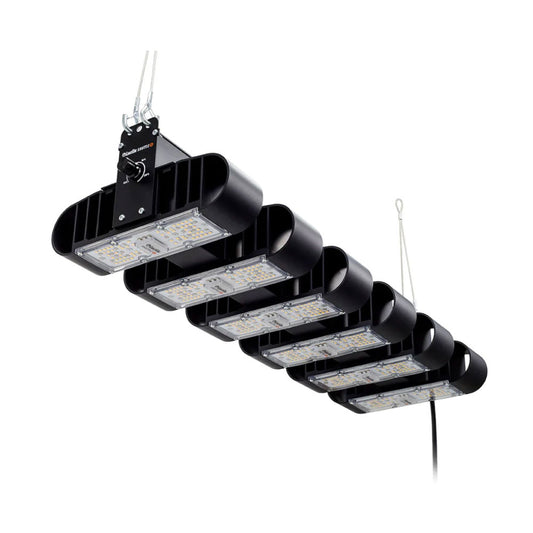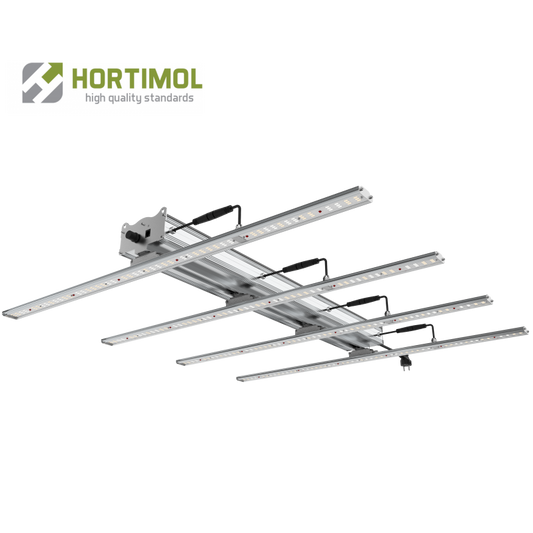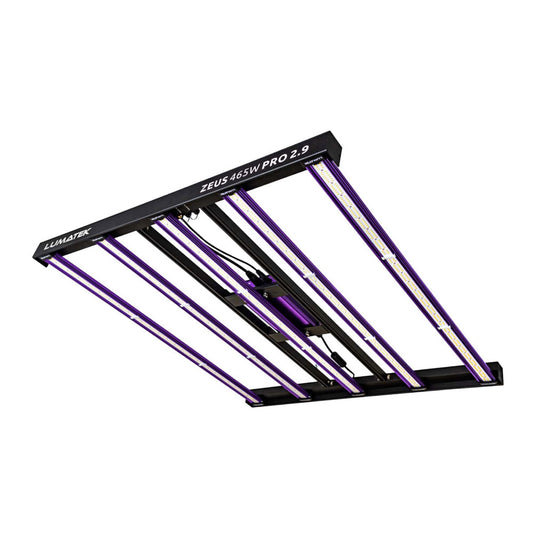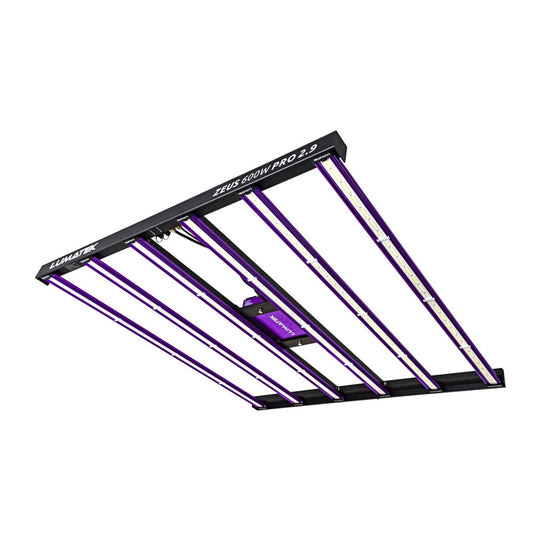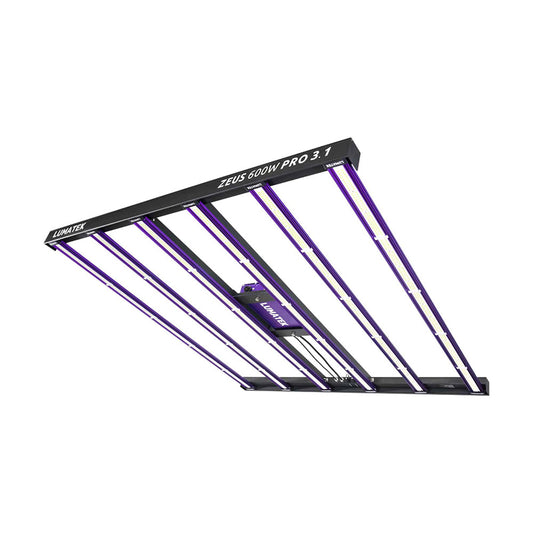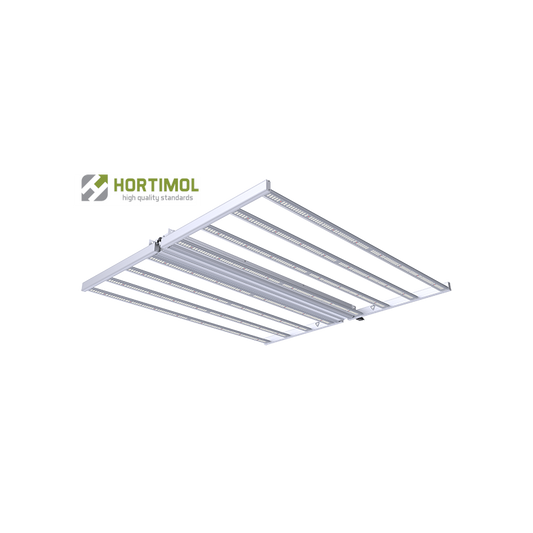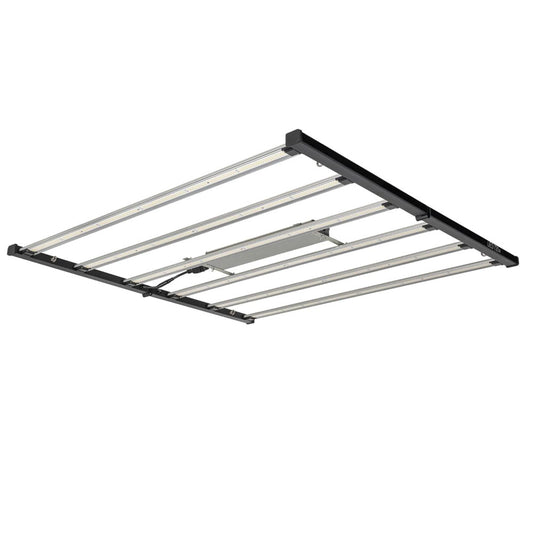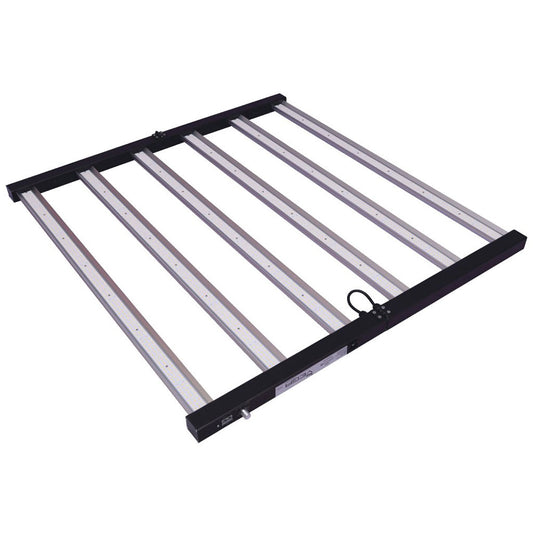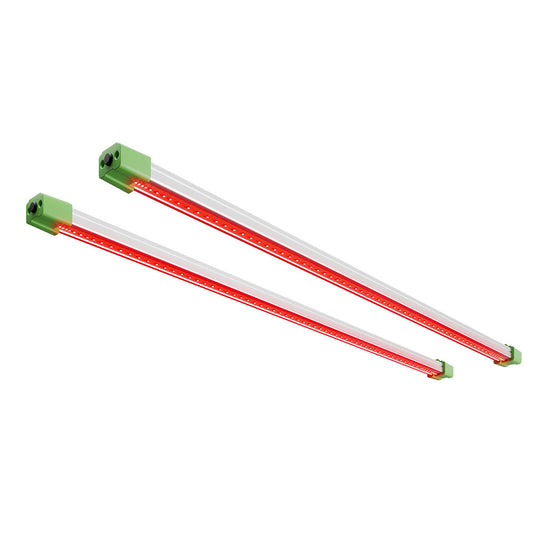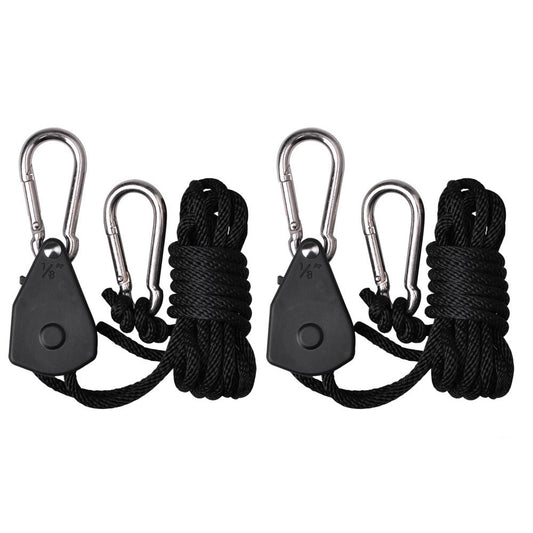Why choose an LED lamp for plants?
The most modern and efficient way to provide artificial light for home and professional greenhouses, hydroponic systems and indoor gardens is LED grow lights. They (already) offer significant advantages over the alternatives.
A little history about LED plant lights,HPS and metal halide lamps
In the early 2000sHPS lightingwasthe only real choicefor growing plants indoors.
The combinationmetal halide lamp (MH) for vegetative growthandHPS for floweringwas a standard because it provided the necessary light spectrum.
In the early years of LED technologyearly LED lighting fixtures were inefficientandcould not compete with HPS, which led to the widespread opinion that they "don't work".
In the last 5-6 years, however,LED technology has improved significantly. Not only have prices dropped by half, but the efficiency of LED grow lights has also increased significantly.Currently, it can be said that the return on investment (ROI) for LED is already occurring within 1 year.
Difference between modern LED lamps, fluorescent, HPS and halogen lamps for plants
In this section we will look at the main differences betweenLED lights for plants,fluorescent lamps,HPS (High-Pressure Sodium) lampsandhalogen lamps, incorporating the latest scientific research on their efficiency, energy consumption and impact on growth. We base the data on scientific research by Professor Bruce Bugbee of Utah State University.
Light spectrum
Different lamps emit different wavelengths that affect photosynthesis and plant development.
👉 LED grow lights offer a targeted light spectrum. Recent research from Utah State University shows that the optimal ratio of blue to red light in LED lighting results in shorter, healthier plants with more yield.
👉 HPS lamps, although powerful, have too little blue light, which leads to elongated plants.
👉 Fluorescent lamps are more balanced than HPS, but do not provide enough red light for excellent flowering.
Light intensity and distribution
Scientific tests show thatLED lamps provide better light distributionon plants.
👉 LED lighting provides even illumination, while HPS lamps have "hot spots", meaning some plants receive more light than others.
👉 Scientists at Utah State University have proven that LED lamps have better light penetration into the plant canopy and thus improve yield.
Energy efficiency – how much electricity do they waste?
👉 LED plant lights use up to 50% less energy than HPS lights, while providing the same (or better) results.
👉 Research shows that a 750W LED lamp produces the same light energy as a 1000W HPS, but with less consumption.
Thermal radiation – are you warming or illuminating your plants?
👉 LED lamps generate much less heat than HPS, which means they can be placed closer to plants.
👉 HPS lamps emit intense heat, which increases the cost of cooling the room.
👉 Measurements show that an HPS lamp generates 756W of heat, while an LED lamp generates only 300W, which results in a better environment for plants.
Lamp life – how long do they last?
LED plant lights: ✅ 50,000+ hours (up to 10 years)
Fluorescent lamps: ⚠️ 10,000 - 15,000 hours
HPS lamps: ❌ 2,000 - 5,000 hours
Halogen lamps: ❌ 2,000 - 3,000 hours
👉 LED lamps are the most durable and can be used up to 10 times longer than HPS lamps.
👉 HPS lamps require frequent replacement, which increases maintenance costs.
👉 Calculations show that LED lamps pay for themselves in 9-18 months, after which they begin to bring savings of $300+ per year in electricity.
Conclusion – why are LED lamps the best choice?
Yes, 20 years ago, LED grow lights were the alternative solution for growing plants indoors. However, nowadays, after the incredible development of technology in this field, we would say that LED lights are the better solution for most gardeners. Why:
✅Better spectrum– Optimal for photosynthesis and growth.
✅Less heat– Prevents plant burning.
✅Longer life– 10 times longer than HPS.
✅Lower consumption– Up to 50% electricity savings.
✅Better light distribution– Higher yield and quality.
If you wantoptimal results,choose LED lights for plants– the most efficient and economical lighting for your plants! 🌱💡
What LED lamps to choose for your plants
LED lamps for seedlings and sprouts 🌱
Seedlings and young plants requirehigh blue light content, which stimulates the growth of strong roots and short, stable stems. Here are suitableLED bars or low to medium power Full Spectrum lamps.
Recommended lamps:
✅**Hortimol TLed 60WLED Lamp 120 cm.** – Suitable for illuminating a larger area of seedlings.
✅**Hortimol TLed 40WLED Lamp 60 cm** – A more compact version for smaller nurseries or home gardens.
✅**Lumatek 100WLED Bar Full Spectrum** – Provides even lighting for seedlings and sprouts.
🔹Distance: 15-30 cm above plants
🔹Duration: 14-18 hours daily
LED lamps for ripe tomatoes, peppers and other fruiting plants 🍅
Mature plants that are entering the flowering phaseflowering and fruiting, requiremore red lightto stimulate the production of flowers and fruits.High power Full Spectrum LED systemswith additional red and infrared diodes are ideal.
Recommended lamps:
✅Lumatek Zeus 600W Pro– High-power lamp for professional greenhouses with Full Spectrum.
✅Lumatek Zeus 465W Pro– An excellent option for medium-sized greenhouses or gardeners with limited space.
✅LED Hortimol MG8 LED Lamp 660W– Suitable for intensive cultivation with high yields.
🔹Distance: 30-50 cm above the plants
🔹Duration: 12-16 hours daily
LED lamps for herbs and leafy vegetables (lettuce, spinach, basil, parsley) 🌿
Herbs and leafy greens requirebalanced combination of blue and red lightfor optimal growth and development.Medium-power Full Spectrum LED lampsare the best choice.
Recommended lamps:
✅**Hortimol MXH4 LED Lamp 330WPro Series** – Suitable for growing herbs and leafy vegetables with a balanced spectrum.
✅LED Lucilu Shuttle 6– Compact option for home growing.
🔹Distance: 20-40 cm above plants
🔹Duration: 12-16 hours daily
✅Adlite R55 LED Grow - LED Bar With Deep Red Light– Increases the photosynthetic efficiency of plants in the flowering and fruiting phase.


